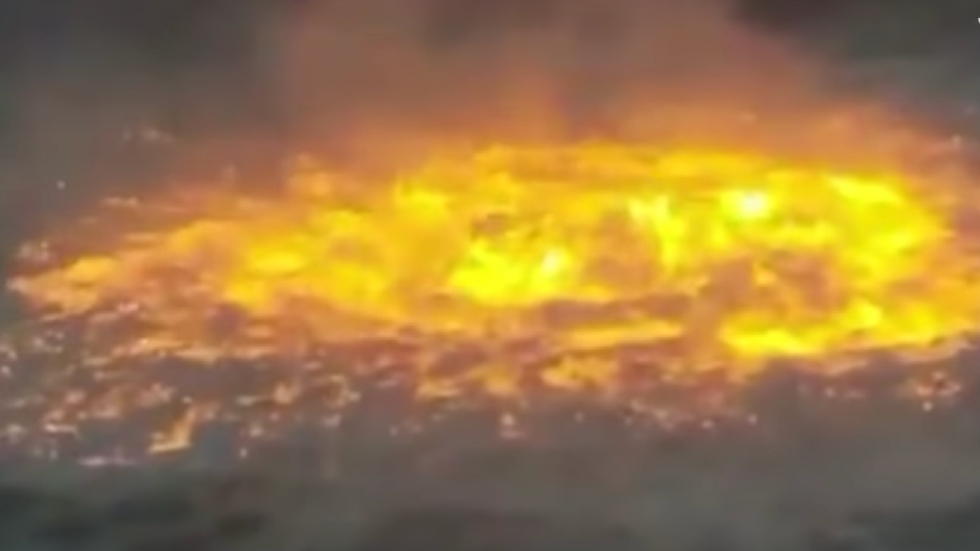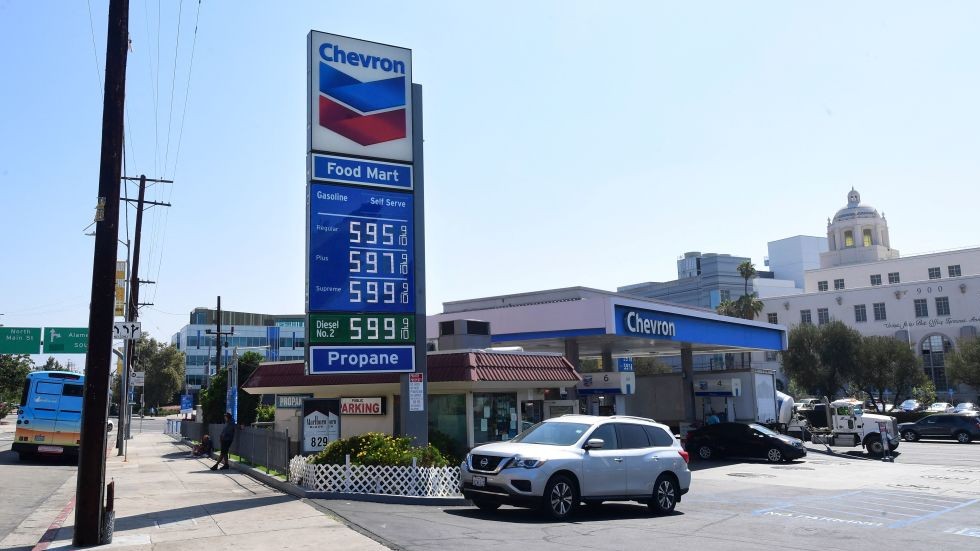Equilibrium/Sustainability — Presented by NextEra Energy — Dry hot American summer: Changing climate strains sleep-away camps

Today is Tuesday! Welcome to Equilibrium, a newsletter that tracks the growing global battle over the future of sustainability. Subscribe here: digital-stage.thehill.com/newsletter-signup.
As kids leave behind a year of pandemic isolation for crowded cabins across the country, camp directors say that rising temperatures, wildfire smoke and shifting species are hindering the carefree summer experiences that previous generations have enjoyed, according to The New York Times.
When unprecedented heat hit the Pacific Northwest last week, the directors of one camp in Washington told the Times that they decided to delay their summer start. They said that intense temperatures, particularly coupled with a lingering statewide mask mandate, would have made campers “too miserable.” Other camps have begun installing air conditioning in their cabins to combat the heat — once an unthinkable luxury that has now become a necessity. A camp director in Virginia, meanwhile, said that water sources popular for canoeing trips as recently as the 1990s “are no longer reliable, or no longer exist,” the Times reported.
Today we’ll be looking at other infrastructure, literal and figurative, that is shifting with the times — the age-old pipelines that litter our seafloors and erupt in the occasional “subaquatic fireball.”
For Equilibrium, we are Saul Elbein and Sharon Udasin. Please send tips or comments to Saul at selbein@digital-stage.thehill.com or Sharon at sudasin@digital-stage.thehill.com. Follow us on Twitter: @saul_elbein and @sharonudasin.
Let’s get to it.
A MESSAGE FROM NEXTERA ENERGY
As the world’s largest producer of wind and solar energy, NextEra Energy is pioneering innovation on green hydrogen – the solution for deep decarbonization of hard-to-abate sectors. See how at NextEraEnergy.com.
Mexico’s aquatic pipeline fire a warning for the US

The swirling “eye of fire” that erupted in the Gulf of Mexico — and on Twitter — on Friday is raising serious concerns about the thousands of miles of oil and gas pipelines that run across the seafloor.
Pemex, Mexico’s state-owned oil company, attributed the blaze to “a bizarre chain of events” in which a lightning storm ignited gas leaking from a hole in an underwater pipeline as it rose to the surface, according to The Associated Press.
The company used control boats to quench what the AP described as a “subaquatic fireball,” reporting that no crude oil was spilled and no one was injured in the incident, which occurred in the Bay of Campeche, off the coast of Tabasco.
Gas leak sounds environmental alarms: Climate activists took to social media following the eruption, linking the events to the broader pipeline vulnerabilities that threaten North America.
Greta Thunberg reposted a video clip of the fire on Twitter, lambasting self-described “climate leaders” who nonetheless are “granting new oil licenses exploring future oil drilling sites.” Greenpeace Mexico said the fire “demonstrates the serious risks that Mexico’s fossil fuel model poses for the environment and people’s safety,” according to the AP.
Mexican President Andrés Manuel López Obrador ruled out sabotage and pledged “to repair the damage,” La Prensa Latina reported.
López Obrador’s administration has repeatedly given Pemex money to help improve its finances, according to Nasdaq, which characterized it as “the world’s most indebted oil company.”
When asked if the incident would lead him to shift his administration’s focus from bolstering Pemex to expanding Mexico’s domestic refineries, the president stressed his commitment to strengthening renewable energy and decreasing dependence on fossil fuels.
A LARGER PROBLEM
What about in the U.S.? While Friday’s eruption may have occurred in Mexican waters, the event also highlights the vulnerabilities of U.S. oil and gas pipelines.
The U.S. agency responsible for supervising offshore pipelines — including 8,600 miles of active pipelines in the Gulf of Mexico — lacks a “robust oversight process” and does not require below-surface inspection, Alex Woodward reported for the Independent, citing a recent Government Accountability Office study.
The study found that the Department of the Interior’s Bureau of Safety and Environmental Enforcement (BSEE) has allowed 97 percent of unused pipelines to remain in the Gulf since the 1960s, without any standards for decommissioning or removing those that have become hazardous. There are more than 18,000 miles of abandoned pipelines and wells littering the seafloor, the GAO report said.
In April, the House Subcommittee on Energy and Mineral Resources introduced the Offshore Pipeline Safety Act, which would require the BSEE to charge an annual pipeline removal fee to firms that file for bankruptcy, Woodward reported. Rep. Raúl Grijalva (D-Ariz.), the subcommittee’s chair, said if companies are unable to “behave responsibly on their own,” then “Congress will be happy to step in and set some overdue boundaries.”
Some of the companies may be about to pay: Just days after the Gulf blaze subsided, a federal judge ordered several oil giants to pay part of a $7.2 billion tab to retire hundreds of aging wells in the Gulf they used to own, Christopher Matthews reported for The Wall Street Journal.
That order stemmed from a grueling suit that began with a June ruling that Fieldwood Energy, a private company that controls the old wells and sought bankruptcy protection, could pass on hundreds of millions of dollars in environmental liabilities to prior owners and insurers. Fieldwood and associated companies — Exxon Mobil, BP, Hess, Royal Dutch Shell and a cohort of insurers — fought out the liability for months in a Houston federal bankruptcy court, Matthews reported. Lawyers for BP estimated its costs could exceed $300 million, while those at Exxon said theirs could reach $373 million and insurers estimated more than $1 billion, according to the Journal.
Takeaway: Fights like these will become more common as countries spend trillions of dollars on decommissioning oil and gas infrastructure, in a global effort to reduce carbon emissions, Matthews wrote, citing Jason Bordoff of Columbia University’s Center for Global Energy Policy.
“Who bears the costs?” Bordoff asked the Journal. “There will be people who want to pass the buck.”
A MESSAGE FROM NEXTERA ENERGY
We’re pioneering innovation on green hydrogen – the solution for deep decarbonization of hard-to-abate sectors. See how it can create jobs, accelerate economic growth and more at NextEraEnergy.com.
Oil spat could threaten renewable energy

Oil shortages and demands from a reawakening economy have pushed prices to a six year high, driving the cost at the pump back above $3 a gallon — or half again where it was last year.
With that spike in price comes conflict among members of OPEC, the world’s biggest oil cartel, about how to manage a controlled increase to production. With the oil majors in retreat, the future of oil prices — and the near-term prospects of renewables — lies in the hands of hedge funds and national oil companies.
Step one — the Goldilocks strategy: Saudi Arabia needs prices to be just right: “high enough to encourage investment, but not so high that they accelerate the adoption of renewables and the end of the oil age,” David Sheppard wrote for Financial Times.
The Saudis, therefore, want OPEC members to ratchet up production to meet that sweet spot — a plan threatened by a dispute with the United Arab Emirates, one of the key nations in the bloc, which believes its quota is set too low.
The UAE energy minister told Anthony Di Paola of Bloomberg that current levels were “totally unfair and unsustainable.”
If no agreement is reached, the larger OPEC-agreed production limits — that ended a 2020 price war between Saudi Arabia and Russia — could collapse.
CLEAN ENERGY OR…?
Oil majors in retreat: If this were happening at any other time, Martijn Rats of Morgan Stanley told Sheppard, the oil majors — companies such as Shell and Exxon that hold a combined 15 percent of the market — would be “reactivating” paused projects to fill the hole in supply.
But not now. Thanks to demand from governments and investors, those companies are selling off a combined $140 billion in oilfield assets, Anjli Raval reported Tuesday for the Financial Times. European companies such as BP and Royal Dutch Shell are under pressure from their governments to cut emissions, but all are under pressure from investors, for whom new oil and gas projects — which the Times’s Sheppard notes have a lifespan of up to 50 years — increasingly seem like a bad bet.
A coming free-for-all? The quickest way for those companies to please investors — and governments — by dropping emissions has been to “shed assets,” Biraj Borkhataria of RBC Capital Markets told the Times’s Raval, which does “nothing for climate change,” as the companies are “just moving emissions from one hand to another.”
Meanwhile, hedge funds and national oil companies like those in OPEC — subject to far less international or investor scrutiny than the majors — are buying those assets up, planning to develop them quickly and meet short-term oil demand. “These operational assets will mint money like you have no idea over the next three to five years,” Laurent Segalen, a clean energy investment banker, told Raval.
Expect that rush to increase if oil prices keep rising behind an OPEC deadlock — potentially letting fracking “come back swinging” next year, Citi analyst Edward Morse told Sheppard.
Together, those two trends suggest the possibility of a coming fragmentation in oil production.
That has four serious implications for the clean energy transition:
- In the oil market, lack of coordination often means countries start producing like crazy, as in the 2020 price war. If Saudi Arabia and the UAE open the taps, Bloomberg’s Di Paola notes, each could increase supply by 1 million barrels a day — about an 8 percent increase for Saudi Arabia, and 33 percent for the UAE — and prompt countries like Russia to boost production, too.
- Add that spike to the production increase from small investors buying up oil major assets, and we could easily see a glut of cheap oil from fragmented sources that cuts the price advantage of renewables.
- Also, by increasing the number of competing actors, that fragmentation — of OPEC, of the majors — threatens the ability of national governments to rein in oil production, and therefore emissions.
- Slower adoption of renewables and a glut of cheap oil would also mean greater short-term carbon emissions, trapping more heat and further destabilizing the weather, worsening fires and threatening agriculture.
Takeaway: The episode between the UAE and Saudi Arabia emphasizes the difficulties of relying on the market to cut emissions or incentivize renewables — and also of coordinating national governments to do the same.
ROUND-UP
Tuesdays in tech

Our occasional look at technologies that are trying to make our civilization more sustainable.
Sustainable farming without soil?
- A new generation of “vertical farming” companies such as New Jersey’s Bowery and Kentucky’s AppHarvest are trying to compete with large-scale commercial agriculture, by integrating high-density hydroponic farms just outside major cities, Kim Severson reported for The New York Times.
- Because hydroponic farms grow vegetables in water rather than in soil, aided by a high-tech assortment of lights, sensors and pumps, they can produce high volumes on very little land.
- But that comes at the price of very high electric costs: 152 watts per square meter of lettuce, and 272 watts for strawberries, according to the agricultural IT specialists at iFarm.
- “Hydroponic production is not growing because it produces healthier food,” Dave Chapman of the Real Organic Project told the Times. “It’s growing because of the money,” including from celebrity investors.
- But the vertical farmers aren’t in competition with organics, AppHarvest founder Jonathan Webb said. They are up against industrial monocultures that have moved production to places that are cheap, rather than sustainable. That, he noted, is why the U.S. imports 4 billion pounds of tomatoes from Mexico each year.
The race to cut carbon from a $300 billion industry
- Making cement without also releasing a ton of carbon dioxide is “one of the toughest problems in heavy industry,” Leslie Hook and Harry Dempsey wrote in the Financial Times. They noted that if the concrete industry were a country, it would be the world’s “fourth-biggest emitter.”
- While cementmakers can cut emissions by about 20 percent by integrating greater efficiency and using less “clinker” — a carbon-rich limestone heated in kilns, which releases the bulk of the building material’s carbon dioxide — the sector really needs some new approaches, an industry representative said.
- Companies are experimenting with other materials, reduced heat methods and carbon capture, but the cost of net zero could increase project costs by 3 percent, the chair of the U.K. Energy Transitions Commission told the Financial Times.
- “It is small, but it is not trivial,” he said. “So it does raise questions about who is going to pay for that.”
Methane emissions in Australian mining region 47 percent above global average
- For every ton of coal produced in the Bowen Basin region of Queensland an average of 7.5 kilograms of methane is released — nearly half again as much as the methane released from an average coal mine, Aaron Clark reported for Bloomberg Green, citing the Kayrros SAS geoanalytics firm.
- The Kayrros report attributed the higher emissions to the region’s geology: older and deeper coal tends to contain more gas. The “metallurgical coal” extracted in the Bowen Basin is a primary ingredient used in steelmaking, which like cement is a very carbon intensive industrial sector. However, major coal producers in the Bowen Basin are trying to mitigate methane releases by testing the use of methane-eating bacteria as biofilters and capturing methane for electricity generation, according to Bloomberg Green.
- “Halting methane releases from the coal sector offers one of the easiest steps to address climate change, because miners already know exactly where and how to capture the emissions. Producers often release gas trapped underground to lower the risk of explosion,” Clark wrote, linking to a Bloomberg explainer that calls methane the “climate’s low-hanging invisible fruit.”
- Reducing methane — which is dozens of times more potent in heating the atmosphere than carbon dioxide — may be the cheapest and easiest way to curb global temperatures in the short-term, thereby “buying time for reducing carbon emissions,” the explainer noted.
{mosads}Quashing methane emissions might slow global warming in the medium term, but for right now, cities around the world continue to break heat records this summer. One weekend surprise: In Kevo, Lapland, in Finland — a region famous for icy fjords, ski resorts and the northern lights — temperatures rose to 92.5 degrees on Sunday, the hottest day since 1914, according to The Guardian.
These figures followed an announcement from Finland’s national metrological institute indicating that the country had experienced its hottest temperature for June since records began in 1844, The Guardian reported.
In the coming days, we’ll take a look at some more unprecedented heat stories — why they’re happening in such unlikely places and what might be some sustainable solutions to these strange conditions.
We’ll see you on Wednesday.
Copyright 2023 Nexstar Media Inc. All rights reserved. This material may not be published, broadcast, rewritten, or redistributed. Regular the hill posts








